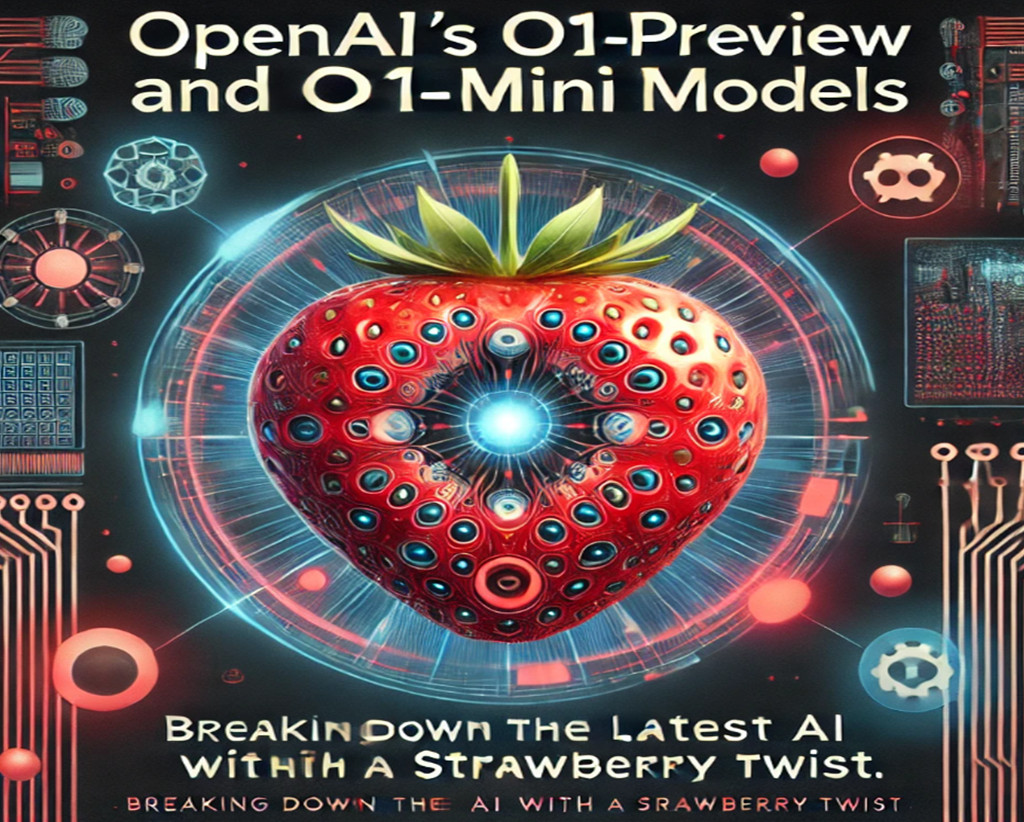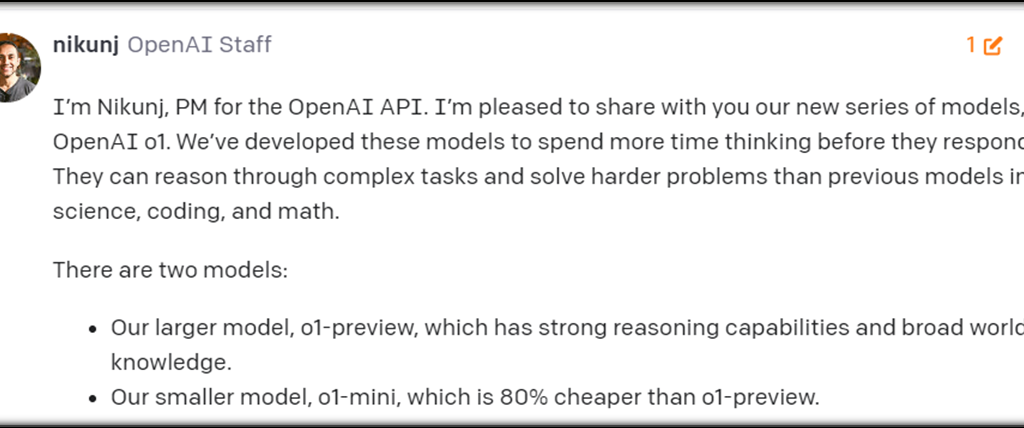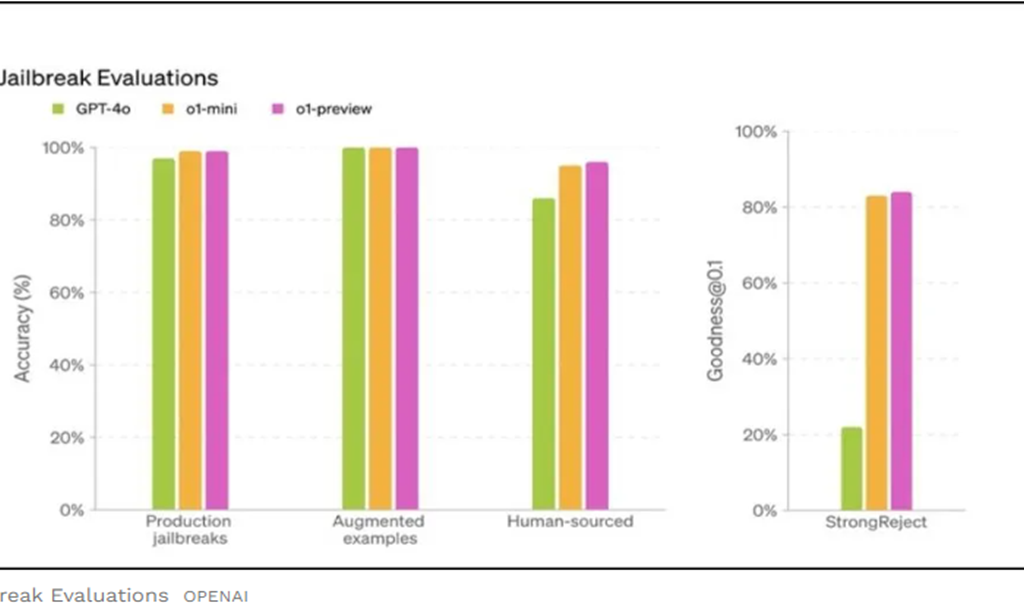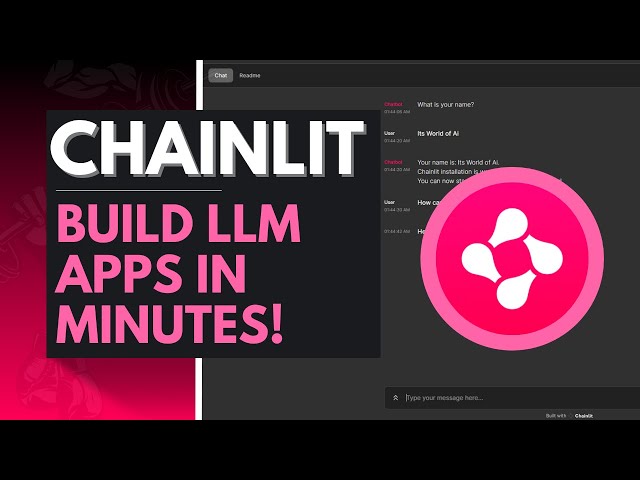
OpenAI has unveiled two new OpenAI’s O1 Models, the o1-preview and o1-mini, —previously rumored as having the codename “strawberry”. This new suite of models, designed to enhance reasoning and problem-solving skills, is now available, promising to revolutionize how we interact with AI.
These AI LLMs perform much better on coding, math, and science problems and tasks than prior models such as GPT-4o by taking more time to think as mentioned by Nikunj, PM for the OpenAI API.

The models are designed to emulate human-like reasoning, allowing them to refine their thinking process over time. This approach is expected to yield substantial improvements in performance over previous models, especially in challenging benchmark tasks.

In this article, we will explore the features, performance, and potential applications of the O1 models, as well as how it works, how to use it.
⚠️Before we dive deeper, I want to mention that o1 models are available only if you are a ChatGPT Plus or Team user, it is not available for free users.
Let’s dive right in.
HOW o1 Models Work?
The OpenAI o1 model operates by carefully processing problems in a way similar to human thinking. It’s designed to spend more time analyzing and refining its approach before giving a response. During its training, the model learns to adjust its thought process, experiment with different strategies, and recognize and correct its mistakes.
In tests, this model has shown exceptional performance, comparable to PhD students on challenging tasks in subjects like physics, chemistry, and biology. It has also proven its strengths in math and coding; for instance, in an exam for the International Mathematics Olympiad (IMO), the GPT-4o model solved only 13% of the problems, while the o1 model achieved an impressive 83%. Its coding skills were evaluated in contests, reaching the 89th percentile on Code forces.
Features of 01 Models:
Some interesting features about these models are:
1. Advanced Chain-of-Thought Reasoning:
OpenAI’s new o1 models introduce a cutting-edge chain-of-thought reasoning process, enabling them to tackle complex problems with enhanced accuracy. Unlike previous models such as GPT-4, the o1 models employ a meticulous, step-by-step approach that significantly improves problem-solving for tasks requiring multi-step reasoning.
This advanced reasoning capability means that the o1 models may take slightly longer to generate responses compared to the GPT-4 models. However, this deliberate, methodical process ensures more precise and reliable outcomes, particularly for intricate or multi-faceted challenges.
By integrating this sophisticated reasoning technique, OpenAI’s o1 models set a new standard for AI performance, offering superior problem-solving abilities and accuracy in comparison to their predecessors.
2. Enhanced Safety Features:
OpenAI’s latest o1 models feature cutting-edge safety mechanisms, setting a new standard for AI security. These models excel in evaluating disallowed content and have shown significant robustness against attempts to bypass safety measures, enhancing their safety for sensitive applications.

Jailbreaking AI models, which involves circumventing built-in safety protocols to induce harmful or unethical outputs, presents increasing security risks as AI technology advances. The o1-preview variant of OpenAI’s o1 model stands out for its improved resilience to such threats, achieving higher security ratings. This heightened resistance is attributed to the model’s sophisticated reasoning capabilities, which ensure stricter adherence to ethical guidelines and make it more challenging for malicious actors to exploit.
3. Improved Performance on STEM Benchmarks
The o1 models rank among the top in various academic benchmarks. For example, o1 ranked in the 89th percentile on Codeforces (a programming competition) and placed within the top 500 students in the USA Math Olympiad qualifier.

4.Trained on Diverse Data
The o1 models have been trained using a mix of public, private, and custom data. This variety helps them understand both general knowledge and specialized topics, making them strong at having conversations and solving problems.
5.Affordable and Cost-Effective
The o1-mini model offers a budget-friendly option compared to the o1-preview, being 80% cheaper while still performing well in areas like math and coding. It’s designed for developers who need high accuracy without breaking the bank, making it perfect for schools, startups, and small businesses. This pricing makes advanced AI more accessible.
6.Safety Testing and External Checks
“Red teaming” in AI means testing the system by simulating attacks or asking tricky questions to find any weaknesses or biases. This is crucial for spotting issues related to safety and ethics before the AI is widely used. The o1 models went through thorough safety tests, including red teaming and other evaluations, to meet high safety and ethical standards.
7.Better Fairness and Less Bias
The o1-preview model is better than GPT-4 at avoiding stereotypical responses and selecting the right answers in fairness tests. It also handles unclear questions more effectively.
8.Tracking Thought Processes and Detecting Deception
OpenAI has added new techniques to track how the o1 models think and spot if they intentionally give wrong information. Early results are promising, showing the models are better at avoiding misinformation.
Overall, OpenAI’s o1 models make big strides in AI reasoning and problem-solving, excelling in fields like math, coding, and science. With both the high-performance o1-preview and the affordable o1-mini, these models are great for complex tasks and offer improved safety and ethical standards through thorough testing.
How to Use OpenAI o1 Models

For ChatGPT Plus and Team Users:
- You can start using the o1 models today by accessing them directly in ChatGPT. Select either the o1-preview or o1-mini model from the model picker.
- Initial rate limits are set at 30 messages per week for o1-preview and 50 messages per week for o1-mini. We are working on increasing these limits and will soon introduce automatic model selection based on the prompt.
For Developers:
- If you qualify for API usage tier 5, you can begin using both o1 models in the API today. The current rate limit is 20 requests per minute (RPM).
- Note that the API does not yet support function calling, streaming, or system messages.
Conclusion
In conclusion, the O1 models not only enhance our current understanding of AI but also set the stage for future innovations that could reshape our world. As we continue to explore the capabilities of these models, the potential for groundbreaking discoveries and advancements in technology is truly exciting.
References:
- https://openai.com/index/introducing-openai-o1-preview/
- https://openai.com/index/openai-o1-mini-advancing-cost-efficient-reasoning/






